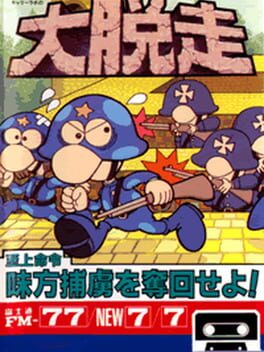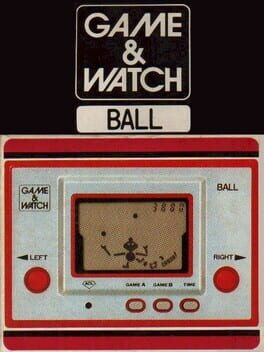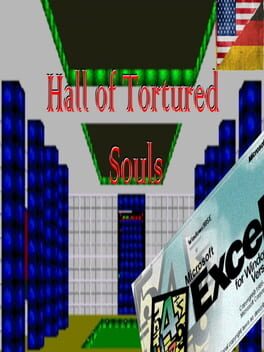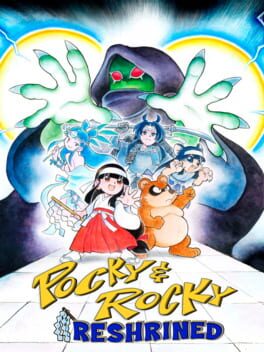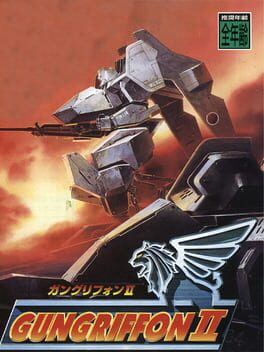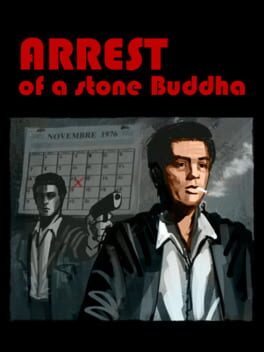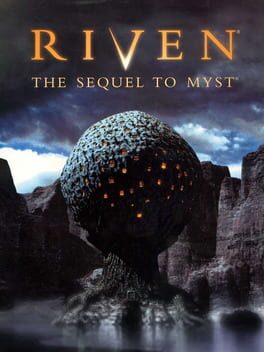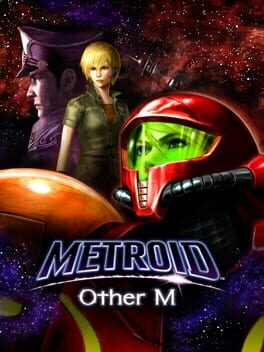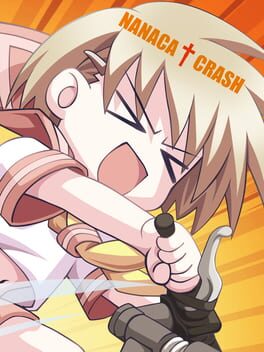hazys
584 Reviews liked by hazys
ActRaiser
1990
Eons of memes and bantz about many portrayals of, and commentaries on, gods and religion in Japanese pop media all threaten to frame Quintet's debut as a schmaltzy creation myth. The last thing I expected was a translation of Japan's cosmogony into a commentary on the monomyth, hiding its version of the pre-Imperial hero god Okuninushi (or Onamushi) behind a Judeo-Christian façade. But that's the level of creativity and innovation that the studio's founding staff and contractors strived for. Set aside the simple yet subversive premise and you'll still have one of the most fun and clever hybrids in console software history. ActRaiser's influence never traveled as far as it ought to, largely materialized in series like Dark Cloud, yet it's more than earned its cult classic reputation. Not that I'd call this the Velvet Underground & Nico of xRPGs, but it's a valid comparison. Few if any video games marketed for a wide audience tackled such a broad, charged set of themes and sensations in such a formative period for the medium, no matter the imperfections.
As unwieldy as it sounds, this fusion of two strongly contrasting genres—side-scrolling action platforming and the primordial god simulator—likely couldn't have been bettered in 1990. Bullfrog's seminal Populous had only arrived on Japanese PCs in March, and I've found no evidence of PC-98 developers working with Peter Molyneux's blueprint. We know, however, that the founding members of Quintet, having left Nihon Falcom during the development of Ys III, had finished 70% of what became ActRaiser before having second thoughts. Whether or not they'd seen or played a certain PC-based god game is yet unknown. (Ironically, their former employer's own Lord Monarch shows Yoshio Kiya's own infatuation with Western imports like Populous, though that game's an early real-time strategy wargame.) The group's growth and frustrations while working on Ys and related PC xRPGs might have pushed them to do something risky for a console audience they hadn't yet catered to. Why not bring the essence of a complex Japanese PC simulation title to a workmanlike action platformer a la Dragon Buster or Castlevania?
The waxing and waning divine works its wonders amidst spirits and sovereigns. It takes on forms both distinct and recondite, like shadow to light. Beyond the waking minds of souls freed into a bourgeoning world lives the idyllic hero, desirable yet unknowable, a paragon which leads through belief up until that faith is no longer needed or traditional. Such tales of good versus evil, or many shades past, endure across time, often as aspirations, warnings, and the subject matter of popular art and entertainment. It's this fascination with mythology, and what it means to people and their worldviews, which anyone playing ActRaiser (among other games letting you "play god") must engage with.
Now the goal was to evoke that feeling of playing god, a paradox given the player's inability to shape the game outside those possibilities which developers set for them. They compromised with a dual-avatar story, where both a chiseled holy warrior and boon cherubic messenger shape separate but linked sections of the world. Main writer and planner Tomoyoshi Miyazaki wisely chose to represent this god's duality of presence. In the sky castle, we are without form, and the angel merely a presenter for this abstract interface set among the clouds. But it's not long before the player descends, their guiding light inseparable from the extra-textual, animating a statuesque warrior into action, all to smite and vanquish the dark. On the flipside, the winged child soon becomes our vessel with which to reinvent this realm we've conquered, swapping out fantastic inhabitants for mundane, moldable men and women. Both characters exemplify the almighty in ways we can bond to, but never deny questions about the powers, limits, and mysteries behind what's sublime and what's imagined. To "play god" is also to probe one's identity and ability in context.
Though we're ostensibly the alpha and omega, mortality still matters to us, as The Master incarnates on this Earth in a limited extension of being. Nothing in this game holds back from trying to kill you, whether it's insta-death pits and lava or just an odd thing flying from the side of the screen. ActRaiser plays nice, though, particularly in its NA and EU versions with reduced difficulty and added extra lives. Most levels have smartly-placed checkpoints, letting you learn each segment without running out of time that easily. There's only a few collectible power-ups, either for score or health and 1-ups, but finding those breakables and wisely rationing magic use for the tougher fights is critical. Even if you can't ever Game Over for obvious reasons, starting the action stages from scratch can feel crushing, the good kind that encourages skill and concentration. The "fail state" in sim mode comes from your angel losing all their health to enemy attacks or collisions, at which point you can't fire any arrows. Overworld nasties will take advantage of this temporary vulnerability, snatching up residents, destroying homes, and even razing all your hard work with earthquakes (damn those skulls!). All these challenges and setbacks mirror those of the families we're fostering, or even the monsters one slaughters for that juicy high score. It's a piece of humble pie to counterbalance these grand themes.
All this came to mind as I flew from one region to another, enjoying the safe game loop that ActRaiser makes the most of. On their own, neither the action or sim sequences rank with the best in those genres, even at the time. The Master's stiff controls and lack of mobility options (my kingdom for a Mega Man-ish slide!) often don't match the severity of enemy attacks and zone control later on. I'd be hard-pressed to call the town management engaging just on its own, with very few means to affect what villagers build and very straightforward terraforming puzzles. If one really wanted a top-notch, side-scrolling action game for SNES, let alone other systems and arcade boards, then there's no shortage of options. SimCity might not exactly classify as a god game now, but it fit the earliest definitions back when most started playing it on PCs or, of course, Nintendo's enhanced port. It's the mutual interactions between these modes, simple to understand and swap between, which creates that vaunted positive loop of advancement. The game's main coder and director, Masaya Hashimoto, had figured out with Ys that you could mix even a decent graphic adventure and Hydlide-like action RPG to create something special. No wonder it works here!
The salad of once contradictory, now inter-weaving ideas continues with ActRaiser's locales and cultural tropes. Fillmore's mysterious, metamorphic forest of foes gives way to a city-state in the making, with one of the shrine worshipers playing oracle and then martyr for The Master's cause. Way later on comes Marahna, a Southeast Asia-like region whose darkest jungles and ornate temple of evil clashes against the hardy, pragmatic people you guide to self-sufficiency. Enemy and boss designs range across typical European and Asian fantasy faire, from dwarfs and lycanthropes to serpents and tengu, with big bads like the centaur knight and ice dragon playing to regional theme. These entities would seem banal and rehashed from competing games, but regain some staying power when framed via this conflict between them and amorphous monotheism which you embody. One can sense the sensory and conceptual distance between this god and its subjects, either those it subjugates or the civilizations it cultivates. No one prays to you from the comfort of their own homes; all must congregate in shrines to communicate with the great beyond, something they can imagine but never fathom. Only by your actions does the world change, reflecting values of nurture over nature and other Abrahamic virtues. Any dialogue between this universe's denizens necessarily involves upheaval.
In this way, the final level, a boss rush much like any other from the era, becomes more than just content reuse. It's the cataclysm of God vs. gods, a refutation of polytheism. But it's just as likely a nod to the religious lore Miyazaki would have been most familiar with, the Kojiki and its narrative of Japan's beginnings. Following in the wake of Susanoo, that hero of chaos, Okuninushi emerged from exile in the underworld to defeat his evil brothers who had forced him there. In its manual, ActRaiser draws a direct parallel, with The Master having fallen in battle to Tanzra (or Satan in the JP version) and his cunning siblings. Only after a period of recovery does our god return to the world, long forgotten but ready to reassert a moral order of society and positivity. The Master and Onamuchi both face trials, personages, and climactic battles to unite their lands and usher their peoples from prehistory into history. As such, the dynamic between The Master and Tanzra, already Manichean and inextricable by definition, is also a less than didactic allegory for the national myth Miyazaki & co. (and players) were familiar with.
Quintet uses these devices, both subtle and obvious, to motivate your journey as expected, and to pull the proverbial rug out from underneath. Imagine doing all this hard work, slicing and jumping through obstacle courses, then sparing villagers from demonic intervention as you pave new roads and fields for them, only to become invisible, beyond recognition. Onamuchi himself acquiesced to this fate, ceding the earthly kami's rulership of Japan to Amaterasu's heavenly lineage. The concept of divinity you brought to these societies was once pivotal to their survival and eventual growth, a uniting force transcending the chaos surrounding them. But in a stable, almost arcadian state of affairs, this godly example now has each and every human finding faith in themselves and others, not in The Master and its herald. ActRaiser ends with a striking inversion of the game's most iconic cinematic tool, the constant Mode 7 zooming in on each action stage you visit. Finally, after the bittersweet revelation that no one visits any shrines anymore—that your own creation has moved on from you, emotionally and ritualistically—the game zooms out, the continents shrinking into nothing as this reality ceases to consider you, or vice versa.
I was genuinely agape when this happened. The game had shown some forward-thinking use of video games' formal elements, mainly to emphasize the uncanny gulf between the clean user interface and what diegetic actions/consequences the buttons led to. But this moment went well beyond those little touches, demonstrating how Miyazaki, Hashimoto, and others at Quintet sought a novel style of storytelling, moving on from the face-value imitation of manga and anime in previous works. For all its issues and missed opportunities, ActRaiser nails these once one-of-a-kind twists that shake you up, simultaneously indulging in new audiovisual potential while using it to the medium's advantage. These surprises aren't as common as I'd hope for throughout the game, but when they happen, oh do they succeed! Moments like Teddy's bad luck in Bloodpool, the archetypal albatross appearing both in Kasandora and Marahna, and the implied Sigurd-Gudrun couple reincarnated by the world tree in Northwall all stick out here. Everything of this sort is still all too simple compared to ye olde Disco Elysium of today, yet effective as a kind of heightened fairytale in-between the melee and management.
The word I'm looking for is alchemy, the transmutation of ordinary elements into a greater whole. It describes the very compound term ActRaiser, a portmanteau I'd expect to see in a game jam ditty. What distinguished this amalgalm of systems from others around the turn of the '90s was this focus on story, not just another player-fellating genre hybrid for its own sake. It's because this adventure makes a micro-critique of our indulgence in power fantasies, and their relation to founding myths, that the individually unpolished bits you interact with remain fun and worthwhile. Perhaps the harvesting and trading of offerings between the cities is a fetch quest underneath, but it rarely feels that meaningless. I just want to gift the Kasadoran a far-off tropical remedy for their troubles, or clothe the citizens of icy Northwall in wool from Aitos. And yes, the final platforming gauntlet might as well be a greatest hits of the adventure's most irritating design quirks, but damn does it push all your skills and patience to the limit. This potion Quintet's concocted leaves a mysterious aftertaste.
Debut software on vintage PCs & consoles could often vary wildly in robustness. Every developer getting something to market on Day 1 has to learn a newly enhanced architecture as quick as is feasible, a feat many can't achieve. ActRaiser stands toe to toe with ritzier, more sophisticated SNES classics that were still on the drawing board in 1990. Koji Yokota and Ayano Koshiro of Telenet & Falcom heritage, among a host of talented artists, go ham with color schemes that the PC-88 and Famicom could merely have dreamed of, enriching the greebles and decorative patterns of dungeons and biomes. Tasteful use of parallax scrolling, alpha-blending transparencies, and other visual effects works in tandem with clean yet florid art direction, bearing the hallmarks of paperback book covers and Dungeons & Dragons. Ayano's brother took up the mantle of music and sound design, a daunting role considering the SNES' new sample-based sound chip. I'm more a fan of Yuzo Koshiro's orchestral work within the confines of FM synthesis, another tall order for musicians and programmers of the day. But this remains one of the system's most memorable and defining soundtracks, with melodious militant marches and more pensive ambiance in abundance. Figuring out how to cram so many instruments, pitch and volume bends, etc. must have been an ordeal for him. My ears tell me it was worth it.
It's a shame, then, that the Koshiro siblings only helped Quintet again for this game's long-debated sequel. The rest of the company continued to evolve, recruiting new talent to develop more ambitious xRPGs dealing with stories and personalities both grandiose and relatable. Hashimoto and Miyazaki's startup had firmly diverged from their old employers' conservative milieu, and future triumphs like Illusion of Gaia, Terranigma, Brightis, and Planet Laika are testament to Quintet's longevity. Us players, having embodied the holiest in both mortal and supernatural ways, can only look back on the studio's works and progeny, subject to critical reverence and dismantlement alike. Somewhere, out in the cosmos, The Master could be liberating new planets, or perhaps dooming them to the curse of civilization we're all too familiar with. That builder's spirit, a lathe of heaven…it's rarely if ever about reaching the end, but savoring the stops along the way, those flips in perspective. ActRaiser toys with players and the perspectives offered to them, engrossing us in the champion's cause while suggesting that this isn't the best of all possible worlds—just the one we must cherish.
Suffice to say, I'm not looking forward to all the gratuitous changes I'm spotting in ActRaiser Renaissance. The most I can gather is that its deviations can't harm the original ex post facto. Until next time, I'll just be listening to Fillmore's FM-synth beta version in the green room.
As unwieldy as it sounds, this fusion of two strongly contrasting genres—side-scrolling action platforming and the primordial god simulator—likely couldn't have been bettered in 1990. Bullfrog's seminal Populous had only arrived on Japanese PCs in March, and I've found no evidence of PC-98 developers working with Peter Molyneux's blueprint. We know, however, that the founding members of Quintet, having left Nihon Falcom during the development of Ys III, had finished 70% of what became ActRaiser before having second thoughts. Whether or not they'd seen or played a certain PC-based god game is yet unknown. (Ironically, their former employer's own Lord Monarch shows Yoshio Kiya's own infatuation with Western imports like Populous, though that game's an early real-time strategy wargame.) The group's growth and frustrations while working on Ys and related PC xRPGs might have pushed them to do something risky for a console audience they hadn't yet catered to. Why not bring the essence of a complex Japanese PC simulation title to a workmanlike action platformer a la Dragon Buster or Castlevania?
The waxing and waning divine works its wonders amidst spirits and sovereigns. It takes on forms both distinct and recondite, like shadow to light. Beyond the waking minds of souls freed into a bourgeoning world lives the idyllic hero, desirable yet unknowable, a paragon which leads through belief up until that faith is no longer needed or traditional. Such tales of good versus evil, or many shades past, endure across time, often as aspirations, warnings, and the subject matter of popular art and entertainment. It's this fascination with mythology, and what it means to people and their worldviews, which anyone playing ActRaiser (among other games letting you "play god") must engage with.
Now the goal was to evoke that feeling of playing god, a paradox given the player's inability to shape the game outside those possibilities which developers set for them. They compromised with a dual-avatar story, where both a chiseled holy warrior and boon cherubic messenger shape separate but linked sections of the world. Main writer and planner Tomoyoshi Miyazaki wisely chose to represent this god's duality of presence. In the sky castle, we are without form, and the angel merely a presenter for this abstract interface set among the clouds. But it's not long before the player descends, their guiding light inseparable from the extra-textual, animating a statuesque warrior into action, all to smite and vanquish the dark. On the flipside, the winged child soon becomes our vessel with which to reinvent this realm we've conquered, swapping out fantastic inhabitants for mundane, moldable men and women. Both characters exemplify the almighty in ways we can bond to, but never deny questions about the powers, limits, and mysteries behind what's sublime and what's imagined. To "play god" is also to probe one's identity and ability in context.
Though we're ostensibly the alpha and omega, mortality still matters to us, as The Master incarnates on this Earth in a limited extension of being. Nothing in this game holds back from trying to kill you, whether it's insta-death pits and lava or just an odd thing flying from the side of the screen. ActRaiser plays nice, though, particularly in its NA and EU versions with reduced difficulty and added extra lives. Most levels have smartly-placed checkpoints, letting you learn each segment without running out of time that easily. There's only a few collectible power-ups, either for score or health and 1-ups, but finding those breakables and wisely rationing magic use for the tougher fights is critical. Even if you can't ever Game Over for obvious reasons, starting the action stages from scratch can feel crushing, the good kind that encourages skill and concentration. The "fail state" in sim mode comes from your angel losing all their health to enemy attacks or collisions, at which point you can't fire any arrows. Overworld nasties will take advantage of this temporary vulnerability, snatching up residents, destroying homes, and even razing all your hard work with earthquakes (damn those skulls!). All these challenges and setbacks mirror those of the families we're fostering, or even the monsters one slaughters for that juicy high score. It's a piece of humble pie to counterbalance these grand themes.
All this came to mind as I flew from one region to another, enjoying the safe game loop that ActRaiser makes the most of. On their own, neither the action or sim sequences rank with the best in those genres, even at the time. The Master's stiff controls and lack of mobility options (my kingdom for a Mega Man-ish slide!) often don't match the severity of enemy attacks and zone control later on. I'd be hard-pressed to call the town management engaging just on its own, with very few means to affect what villagers build and very straightforward terraforming puzzles. If one really wanted a top-notch, side-scrolling action game for SNES, let alone other systems and arcade boards, then there's no shortage of options. SimCity might not exactly classify as a god game now, but it fit the earliest definitions back when most started playing it on PCs or, of course, Nintendo's enhanced port. It's the mutual interactions between these modes, simple to understand and swap between, which creates that vaunted positive loop of advancement. The game's main coder and director, Masaya Hashimoto, had figured out with Ys that you could mix even a decent graphic adventure and Hydlide-like action RPG to create something special. No wonder it works here!
The salad of once contradictory, now inter-weaving ideas continues with ActRaiser's locales and cultural tropes. Fillmore's mysterious, metamorphic forest of foes gives way to a city-state in the making, with one of the shrine worshipers playing oracle and then martyr for The Master's cause. Way later on comes Marahna, a Southeast Asia-like region whose darkest jungles and ornate temple of evil clashes against the hardy, pragmatic people you guide to self-sufficiency. Enemy and boss designs range across typical European and Asian fantasy faire, from dwarfs and lycanthropes to serpents and tengu, with big bads like the centaur knight and ice dragon playing to regional theme. These entities would seem banal and rehashed from competing games, but regain some staying power when framed via this conflict between them and amorphous monotheism which you embody. One can sense the sensory and conceptual distance between this god and its subjects, either those it subjugates or the civilizations it cultivates. No one prays to you from the comfort of their own homes; all must congregate in shrines to communicate with the great beyond, something they can imagine but never fathom. Only by your actions does the world change, reflecting values of nurture over nature and other Abrahamic virtues. Any dialogue between this universe's denizens necessarily involves upheaval.
In this way, the final level, a boss rush much like any other from the era, becomes more than just content reuse. It's the cataclysm of God vs. gods, a refutation of polytheism. But it's just as likely a nod to the religious lore Miyazaki would have been most familiar with, the Kojiki and its narrative of Japan's beginnings. Following in the wake of Susanoo, that hero of chaos, Okuninushi emerged from exile in the underworld to defeat his evil brothers who had forced him there. In its manual, ActRaiser draws a direct parallel, with The Master having fallen in battle to Tanzra (or Satan in the JP version) and his cunning siblings. Only after a period of recovery does our god return to the world, long forgotten but ready to reassert a moral order of society and positivity. The Master and Onamuchi both face trials, personages, and climactic battles to unite their lands and usher their peoples from prehistory into history. As such, the dynamic between The Master and Tanzra, already Manichean and inextricable by definition, is also a less than didactic allegory for the national myth Miyazaki & co. (and players) were familiar with.
Quintet uses these devices, both subtle and obvious, to motivate your journey as expected, and to pull the proverbial rug out from underneath. Imagine doing all this hard work, slicing and jumping through obstacle courses, then sparing villagers from demonic intervention as you pave new roads and fields for them, only to become invisible, beyond recognition. Onamuchi himself acquiesced to this fate, ceding the earthly kami's rulership of Japan to Amaterasu's heavenly lineage. The concept of divinity you brought to these societies was once pivotal to their survival and eventual growth, a uniting force transcending the chaos surrounding them. But in a stable, almost arcadian state of affairs, this godly example now has each and every human finding faith in themselves and others, not in The Master and its herald. ActRaiser ends with a striking inversion of the game's most iconic cinematic tool, the constant Mode 7 zooming in on each action stage you visit. Finally, after the bittersweet revelation that no one visits any shrines anymore—that your own creation has moved on from you, emotionally and ritualistically—the game zooms out, the continents shrinking into nothing as this reality ceases to consider you, or vice versa.
I was genuinely agape when this happened. The game had shown some forward-thinking use of video games' formal elements, mainly to emphasize the uncanny gulf between the clean user interface and what diegetic actions/consequences the buttons led to. But this moment went well beyond those little touches, demonstrating how Miyazaki, Hashimoto, and others at Quintet sought a novel style of storytelling, moving on from the face-value imitation of manga and anime in previous works. For all its issues and missed opportunities, ActRaiser nails these once one-of-a-kind twists that shake you up, simultaneously indulging in new audiovisual potential while using it to the medium's advantage. These surprises aren't as common as I'd hope for throughout the game, but when they happen, oh do they succeed! Moments like Teddy's bad luck in Bloodpool, the archetypal albatross appearing both in Kasandora and Marahna, and the implied Sigurd-Gudrun couple reincarnated by the world tree in Northwall all stick out here. Everything of this sort is still all too simple compared to ye olde Disco Elysium of today, yet effective as a kind of heightened fairytale in-between the melee and management.
The word I'm looking for is alchemy, the transmutation of ordinary elements into a greater whole. It describes the very compound term ActRaiser, a portmanteau I'd expect to see in a game jam ditty. What distinguished this amalgalm of systems from others around the turn of the '90s was this focus on story, not just another player-fellating genre hybrid for its own sake. It's because this adventure makes a micro-critique of our indulgence in power fantasies, and their relation to founding myths, that the individually unpolished bits you interact with remain fun and worthwhile. Perhaps the harvesting and trading of offerings between the cities is a fetch quest underneath, but it rarely feels that meaningless. I just want to gift the Kasadoran a far-off tropical remedy for their troubles, or clothe the citizens of icy Northwall in wool from Aitos. And yes, the final platforming gauntlet might as well be a greatest hits of the adventure's most irritating design quirks, but damn does it push all your skills and patience to the limit. This potion Quintet's concocted leaves a mysterious aftertaste.
Debut software on vintage PCs & consoles could often vary wildly in robustness. Every developer getting something to market on Day 1 has to learn a newly enhanced architecture as quick as is feasible, a feat many can't achieve. ActRaiser stands toe to toe with ritzier, more sophisticated SNES classics that were still on the drawing board in 1990. Koji Yokota and Ayano Koshiro of Telenet & Falcom heritage, among a host of talented artists, go ham with color schemes that the PC-88 and Famicom could merely have dreamed of, enriching the greebles and decorative patterns of dungeons and biomes. Tasteful use of parallax scrolling, alpha-blending transparencies, and other visual effects works in tandem with clean yet florid art direction, bearing the hallmarks of paperback book covers and Dungeons & Dragons. Ayano's brother took up the mantle of music and sound design, a daunting role considering the SNES' new sample-based sound chip. I'm more a fan of Yuzo Koshiro's orchestral work within the confines of FM synthesis, another tall order for musicians and programmers of the day. But this remains one of the system's most memorable and defining soundtracks, with melodious militant marches and more pensive ambiance in abundance. Figuring out how to cram so many instruments, pitch and volume bends, etc. must have been an ordeal for him. My ears tell me it was worth it.
It's a shame, then, that the Koshiro siblings only helped Quintet again for this game's long-debated sequel. The rest of the company continued to evolve, recruiting new talent to develop more ambitious xRPGs dealing with stories and personalities both grandiose and relatable. Hashimoto and Miyazaki's startup had firmly diverged from their old employers' conservative milieu, and future triumphs like Illusion of Gaia, Terranigma, Brightis, and Planet Laika are testament to Quintet's longevity. Us players, having embodied the holiest in both mortal and supernatural ways, can only look back on the studio's works and progeny, subject to critical reverence and dismantlement alike. Somewhere, out in the cosmos, The Master could be liberating new planets, or perhaps dooming them to the curse of civilization we're all too familiar with. That builder's spirit, a lathe of heaven…it's rarely if ever about reaching the end, but savoring the stops along the way, those flips in perspective. ActRaiser toys with players and the perspectives offered to them, engrossing us in the champion's cause while suggesting that this isn't the best of all possible worlds—just the one we must cherish.
Suffice to say, I'm not looking forward to all the gratuitous changes I'm spotting in ActRaiser Renaissance. The most I can gather is that its deviations can't harm the original ex post facto. Until next time, I'll just be listening to Fillmore's FM-synth beta version in the green room.
Daidassou
1985
"The Great Escape" has inspired quite a lot of prison-break games, or even just sequences of that sort across the medium. Who doesn't have fond stories of humiliating those Nazis just to get some fresh air outside Castle Wolfenstein? How can I forget Codemasters' own Prisoners of War, a game all about playing a chronic escapee? Just as interesting are the more arcade-y translations of this premise, from Silas Warner's genre codifier to SNK's P.O.W.. Conveying the gravity of this scenario while still entertaining players is no small feat. I wish I could say Carry Lab's Daidassou was more successful at that, but it remains one of the best early puzzle action games for FM-7, PC-88, and similar Japanese PCs. It eschews realism in favor of fun farce, giving players just enough means to dash in, liberate each camp, and shoot or explode guards along the way.
Rather than playing a POW ready to break out, you're an outside operative instead, trotting into each stage with a pistol, scarce ammunition and grenades, and just a few lives. The game loop's simple: dodge or remove German troops on their patrols, nab their keys and other collectibles (either ammo or score items), and unlock cell doors to gather up GIs. Then you've got to escort one or more trails of POWs back to the starting point—think Flicky and other maze games of that vintage. Every level tries its best to iterate on this simple premise, with layouts becoming increasingly Escher-like and full of surprises. The isometric perspective both adds useful depth to the mazes and works against players in a frustrating but meaningful way. Just having the top-down view would equate this to Wolfenstein and other game center faire; this skewed angle instead makes you work to decipher these layouts, planning and improvising the further in you go.
Carry Lab usually wasn't the type to develop distinctly Golden Age-like arcade games for PC users. At most, they'd done third-person racing titles like F2 Grand Prix, or technically impressive pseudo-sprite scaling stuff a la SEGA's Buck Rogers. Nonetheless, I think Daidassou became a cult classic for good reason. It handles its fake sprites very well, with nary any slowdown nor worsening input delay. Controls are as clunky to learn and master as you'd expect from a mid-'80s numpad-based game, but the measured pace of play, and emphasis on routing to avoid enemies when reasonable, makes this easier to overlook. Whoever coded and/or designed these stages and systems had a grasp on what keeps players like me coming back. One's never powerful enough to just gun all the Nazis down, but on the flipside, a little bit of ingenuity and stealthy action goes a long way here.
This odd mashup of genres can lead to some fun scenarios. For example, the worst thing that can happen is when a guard recaptures one of The Boys you've just saved. Usually they just get thrown back in their initial quarters, but sometimes the enemy will instead place them inside a pink-doored cell which one can't just unlock. Now you gotta blow it open with a grenade you might not even have! Chasing those high scores (of which the default is already substantial) means using resources wisely and anticipating the worst, be it German reinforcements or snagging on corners long enough for them to catch you. Waves upon waves of mazes, soldiers, and wild goose chases start to blur together—the banality of war seeps into even a supposedly heroic effort. Should you finally fall in the line of duty, all one gets is a spot on the score table, nothing like a Purple Heart or Medal of Honor. But then again, it's the journey that counts, and Daidassou does well with its fundamentals no matter how slight it is elsewhere.
Many won't even touch this game once they see its art style, a garish blend of tans, browns, greens, and pinks befitting the 8-color high resolution video mode. And there's no cute, memorable audio to speak of, just tinny foot-taps, gunfire, and beeper jingles. I can describe Daidassou's aesthetic in one word: spartan. What's here is a no-frills, inglorious trudge through castles of combat and collect-a-Joe, with only these silly deformed caricatures of U.S. and German soldiers exuding any charm. The aforementioned depth-bending level designs also lend identity, but aren't as impressive as the game's pre-Cannon Fodder irreverence towards the Great War era. I can't accuse Carry Lab's product of lacking in content, as there's a huge amount of levels to complete, but I won't blame others for bouncing off once the repetition sets in. PC players back in the day got their money's worth here, assuming they weren't spending their days editing levels in Sokoban or Lode Runner, or just trying to solve the ordeals of xRPGs like Xanadu. This kind of anti-Great Escape must have seemed odd then, let alone now, yet it found an audience back when weird but compelling premises like this were commercially viable.
I'd ultimately love to say Daidassou got a worthwhile console or arcade port. Sadly it remained exclusive to these 8-bit J-PCs, with no follow-up titles to speak of. Carry Lab themselves got involved with Famicom development via their Disk System releases under Square's Disk Original Group (DOG) label, but they still didn't make a sequel while they had the chance. Like many once notable self-publishing developers of the early J-PC days, this company lasted up till the end of the '80s before financial woes led them to bankruptcy. (Entering a legal fight with dB-SOFT over plagiarizing their JET dictionary products for word processing didn't help, nor did a staff exodus around '87.) The game's designers at tabletop company Ad Technos are even more anonymous, much to my dismay. It's funny how the slow fade-out of Carry Lab and its classic games led to the founding of Alfa System, well known today for so many JRPGs, ADVs, etc. Still, I recommend this '85 prison action ditty despite getting lost in the shuffle of its creators' history and the more impressive games releasing around that time.
Rather than playing a POW ready to break out, you're an outside operative instead, trotting into each stage with a pistol, scarce ammunition and grenades, and just a few lives. The game loop's simple: dodge or remove German troops on their patrols, nab their keys and other collectibles (either ammo or score items), and unlock cell doors to gather up GIs. Then you've got to escort one or more trails of POWs back to the starting point—think Flicky and other maze games of that vintage. Every level tries its best to iterate on this simple premise, with layouts becoming increasingly Escher-like and full of surprises. The isometric perspective both adds useful depth to the mazes and works against players in a frustrating but meaningful way. Just having the top-down view would equate this to Wolfenstein and other game center faire; this skewed angle instead makes you work to decipher these layouts, planning and improvising the further in you go.
Carry Lab usually wasn't the type to develop distinctly Golden Age-like arcade games for PC users. At most, they'd done third-person racing titles like F2 Grand Prix, or technically impressive pseudo-sprite scaling stuff a la SEGA's Buck Rogers. Nonetheless, I think Daidassou became a cult classic for good reason. It handles its fake sprites very well, with nary any slowdown nor worsening input delay. Controls are as clunky to learn and master as you'd expect from a mid-'80s numpad-based game, but the measured pace of play, and emphasis on routing to avoid enemies when reasonable, makes this easier to overlook. Whoever coded and/or designed these stages and systems had a grasp on what keeps players like me coming back. One's never powerful enough to just gun all the Nazis down, but on the flipside, a little bit of ingenuity and stealthy action goes a long way here.
This odd mashup of genres can lead to some fun scenarios. For example, the worst thing that can happen is when a guard recaptures one of The Boys you've just saved. Usually they just get thrown back in their initial quarters, but sometimes the enemy will instead place them inside a pink-doored cell which one can't just unlock. Now you gotta blow it open with a grenade you might not even have! Chasing those high scores (of which the default is already substantial) means using resources wisely and anticipating the worst, be it German reinforcements or snagging on corners long enough for them to catch you. Waves upon waves of mazes, soldiers, and wild goose chases start to blur together—the banality of war seeps into even a supposedly heroic effort. Should you finally fall in the line of duty, all one gets is a spot on the score table, nothing like a Purple Heart or Medal of Honor. But then again, it's the journey that counts, and Daidassou does well with its fundamentals no matter how slight it is elsewhere.
Many won't even touch this game once they see its art style, a garish blend of tans, browns, greens, and pinks befitting the 8-color high resolution video mode. And there's no cute, memorable audio to speak of, just tinny foot-taps, gunfire, and beeper jingles. I can describe Daidassou's aesthetic in one word: spartan. What's here is a no-frills, inglorious trudge through castles of combat and collect-a-Joe, with only these silly deformed caricatures of U.S. and German soldiers exuding any charm. The aforementioned depth-bending level designs also lend identity, but aren't as impressive as the game's pre-Cannon Fodder irreverence towards the Great War era. I can't accuse Carry Lab's product of lacking in content, as there's a huge amount of levels to complete, but I won't blame others for bouncing off once the repetition sets in. PC players back in the day got their money's worth here, assuming they weren't spending their days editing levels in Sokoban or Lode Runner, or just trying to solve the ordeals of xRPGs like Xanadu. This kind of anti-Great Escape must have seemed odd then, let alone now, yet it found an audience back when weird but compelling premises like this were commercially viable.
I'd ultimately love to say Daidassou got a worthwhile console or arcade port. Sadly it remained exclusive to these 8-bit J-PCs, with no follow-up titles to speak of. Carry Lab themselves got involved with Famicom development via their Disk System releases under Square's Disk Original Group (DOG) label, but they still didn't make a sequel while they had the chance. Like many once notable self-publishing developers of the early J-PC days, this company lasted up till the end of the '80s before financial woes led them to bankruptcy. (Entering a legal fight with dB-SOFT over plagiarizing their JET dictionary products for word processing didn't help, nor did a staff exodus around '87.) The game's designers at tabletop company Ad Technos are even more anonymous, much to my dismay. It's funny how the slow fade-out of Carry Lab and its classic games led to the founding of Alfa System, well known today for so many JRPGs, ADVs, etc. Still, I recommend this '85 prison action ditty despite getting lost in the shuffle of its creators' history and the more impressive games releasing around that time.
Jump Bug
1981
SCP-JUMPBUG-LOGGD — Herbie Hopperheap
Object Class: Safe
Standard Containment Procedures: SCP-JUMPBUG-LOGGD is to be contained within a regular MAME installation or period-appropriate arcade video game cabinet and PCB board. This housing must always be enclosed in a small human-sized room, with all surveillance from beyond one-way mirrors to prevent radiation of vibes onto observers. All personnel must interact with and stimulate the entity via a digital-to-physical interface such as a keyboard, joystick, console controller, etc. Familiarity with similar arcade-based media from the 1970s and early 1980s is advisable. Please use remote robot arm to insert coins and otherwise tamper with specimen. As ever, we enforce these rules to protect you from dangerous hazards—even those cloaked behind the façade of an appealing interactive media apparatus like this.
[NOTICE FROM THE FOUNDATION RECORDS AND INFORMATION SECURITY ADMINISTRATION: ALL NEURO-LUDOLOGICAL EXPOSURE TO THE VEHICULAR CREATURE RISKS PERMANENT MENTAL TRANSFORMATION WITH SYMPTOMS INCLUDING ADDICTION, EYE STRAIN, KINNING, MANUFACTURED NOSTALGIA, ETC. — REFRAIN FROM EXCESSIVE DURATION OF TESTING, OR "HOPPING" DURING SESSIONS, UNLESS PROPER O5 COUNCIL CLEARANCE AND SUPERVISION GRANTED]
Temporary "lives" structure of play can be bypassed for purposes of experimentation via preserving machine states in memory, but is advised against following past anomalies and accidents. Researchers and security must wear quote-unquote "Cool '80s VR Shades" when in presence of SCP-JUMPBUG-LOGGD at any time to prevent sensory damage. Using on-site equipment ensures safety of multiple tests upon subject without damage or evidence tampering for personnel. Bear in mind that these measures are not fool-proof and remain subject to review and risk evaluation as we continue to study the subject. A prior outbreak, SCP-4163 [Not unlike the fabled "Tetris Effect", but worse — Ed.], and its transmission of sub-anomalies to similar interfaces sets precedent here, hence the supervision of all control devices and, if needed, isolation and disintegration of them.
Description: Sales sheet refers to initial development contractor, Hoei Sangyo. Creator attribution is yet unknown, but the subject was born from multiple minicomputer environments operated by Alpha Denshi Corporation on behalf of Hoei Sangyo and distributor SEGA Enterprises. This electronic printed circuit board (PCB), plus accompanying means of human interaction and presentation, was first sold to game centers, movie theaters, and other recreational venues sometime in 1981, starting in Japan. Ever since, dwindling units of "Jump Bug" have appeared in the hands of collectors, or idling and decaying within landfills or warehouses. Wherever found, the entity's reported to occasionally entice, entrance, haunt, and finally consume its players' faculties through processes still undetermined.
Upon receiving power, subject board device activates and transmits binary-encoded signals to cabinet housing and attached monitor, displaying series of vibrant, colorful animated worlds on black background. Inserting coinage of proper weight (ex. Standard U.S. quarter) into designated slot one or more times to prepare subject for testing. So far, all our tests conclude with a "Game Over" prompt on-screen, after which one can feed the thing more cupronickel currency or proceed to power it down. Successful adherence to procedures and methodology have so far spared our rotating teams from falling into purported existential traps laid out by the software and its means of conveyance.
Addendum [author's subtitle: THE ACTUAL DAMN REVIEW] The following journal from Dr. [REDACTED] is a useful summary of knowledge gained from "1CC"-ing the provided experience:
"March 26, 2023, 1732 hours: I've finished a few so-called "loops" of this odd video game, a demon in disguise if I may conjecture. The side-scrolling progression mostly resembles Konami's Scramble from earlier that year, at least until one reaches the dungeon section which doesn't auto-scroll. Because the eponymous Herbie-like vehicle can't stop bounding, the driver has to control its air velocity and direction, all while shooting down various monsters and collecting money bags for score and extra chances. In short, it's got a devilish game loop, hooking me whenever I let down my guard and haven't any TPS reports or other busywork to distract me.”
"…Wait a minute, this thing's what's been distracting me! Excuse my irreverence towards Foundation duties, but that's just one side-effect the subject can displace upon its witnesses. Other phenomena this machine expresses, like its psychedelic graphical changes demarcating new sections of the game world, threatens to overcome me with delight, a microprocessor prescribing desertion of my daily worries. Come to think of it, I don't understand why the Council keeps putting me on this project every time I politely back out and work elsewhere. Do they want me to let my guard down and become a true victim of something this fun, replayable, and unique among all those innocuous arcade pastimes?"
"Never mind that I can truly see the appeal here. It's a deft fusion of Donkey Kong and Scramble which could attain a cult-classic reputation where it re-released to market at the level of those games. This was Alpha Denshi's most notable early product, which I can both respect and disfavor given its tantalizing qualities. Reigning in this spirited VW Beetle across cityscapes, wastelands, castles, and seas takes a lot of dexterity and memorization, but gives players much reward as they uncover hidden tricks and strategies for skillful play. There's an anarchy here which dares you to get as high on life as it does, albeit a seductive, ultimately slight and repetitive reality limited by ROM storage."
"In their later ADK years, Alpha Denshi would remake a couple vintage hits like Crush Roller, but not this for some reason. Damn shame, really. The DNA of something as formative as Pac-Land or even Super Mario Bros. goes back to clever genre hybrids like this, a known quantity and charting arcade release in its era. Jump Bug is also more transparent with its challenge and means of mastery than almost all of its competitors in '81, with the bags-for-1ups system and ability to brake and reposition mid-air making this very fair for the era. Anyone prone to deeming these Golden Age cabinets as "coin-munchers" ought to give this a try and see if that generalization holds up. Well, only if they take all necessary preventative measures—I'm not suggesting one should expose their minds to this subject with such fervor as I've contemplated."
A couple days later, Dr. [REDACTED] was nowhere to be found on the containment facility premises. Our preliminary search-and-rescue operation turned up no trace of his body, belongings, or other data. CCTV facility at the site was also corrupt and unreadable, and a forensic autopsy of the entity revealed its contents had been copied to external storage. Until further notice, we are taking even stricter precautions regarding access to and use of SCP-JUMPBUG-LOGGD, so as to prevent losses of human resources. In the subject site manager's words: "That darn Herbie Hopperheap whatchamacallit really bugged him out, 's all I can gather."
Object Class: Safe
Standard Containment Procedures: SCP-JUMPBUG-LOGGD is to be contained within a regular MAME installation or period-appropriate arcade video game cabinet and PCB board. This housing must always be enclosed in a small human-sized room, with all surveillance from beyond one-way mirrors to prevent radiation of vibes onto observers. All personnel must interact with and stimulate the entity via a digital-to-physical interface such as a keyboard, joystick, console controller, etc. Familiarity with similar arcade-based media from the 1970s and early 1980s is advisable. Please use remote robot arm to insert coins and otherwise tamper with specimen. As ever, we enforce these rules to protect you from dangerous hazards—even those cloaked behind the façade of an appealing interactive media apparatus like this.
[NOTICE FROM THE FOUNDATION RECORDS AND INFORMATION SECURITY ADMINISTRATION: ALL NEURO-LUDOLOGICAL EXPOSURE TO THE VEHICULAR CREATURE RISKS PERMANENT MENTAL TRANSFORMATION WITH SYMPTOMS INCLUDING ADDICTION, EYE STRAIN, KINNING, MANUFACTURED NOSTALGIA, ETC. — REFRAIN FROM EXCESSIVE DURATION OF TESTING, OR "HOPPING" DURING SESSIONS, UNLESS PROPER O5 COUNCIL CLEARANCE AND SUPERVISION GRANTED]
Temporary "lives" structure of play can be bypassed for purposes of experimentation via preserving machine states in memory, but is advised against following past anomalies and accidents. Researchers and security must wear quote-unquote "Cool '80s VR Shades" when in presence of SCP-JUMPBUG-LOGGD at any time to prevent sensory damage. Using on-site equipment ensures safety of multiple tests upon subject without damage or evidence tampering for personnel. Bear in mind that these measures are not fool-proof and remain subject to review and risk evaluation as we continue to study the subject. A prior outbreak, SCP-4163 [Not unlike the fabled "Tetris Effect", but worse — Ed.], and its transmission of sub-anomalies to similar interfaces sets precedent here, hence the supervision of all control devices and, if needed, isolation and disintegration of them.
Description: Sales sheet refers to initial development contractor, Hoei Sangyo. Creator attribution is yet unknown, but the subject was born from multiple minicomputer environments operated by Alpha Denshi Corporation on behalf of Hoei Sangyo and distributor SEGA Enterprises. This electronic printed circuit board (PCB), plus accompanying means of human interaction and presentation, was first sold to game centers, movie theaters, and other recreational venues sometime in 1981, starting in Japan. Ever since, dwindling units of "Jump Bug" have appeared in the hands of collectors, or idling and decaying within landfills or warehouses. Wherever found, the entity's reported to occasionally entice, entrance, haunt, and finally consume its players' faculties through processes still undetermined.
Upon receiving power, subject board device activates and transmits binary-encoded signals to cabinet housing and attached monitor, displaying series of vibrant, colorful animated worlds on black background. Inserting coinage of proper weight (ex. Standard U.S. quarter) into designated slot one or more times to prepare subject for testing. So far, all our tests conclude with a "Game Over" prompt on-screen, after which one can feed the thing more cupronickel currency or proceed to power it down. Successful adherence to procedures and methodology have so far spared our rotating teams from falling into purported existential traps laid out by the software and its means of conveyance.
Addendum [author's subtitle: THE ACTUAL DAMN REVIEW] The following journal from Dr. [REDACTED] is a useful summary of knowledge gained from "1CC"-ing the provided experience:
"March 26, 2023, 1732 hours: I've finished a few so-called "loops" of this odd video game, a demon in disguise if I may conjecture. The side-scrolling progression mostly resembles Konami's Scramble from earlier that year, at least until one reaches the dungeon section which doesn't auto-scroll. Because the eponymous Herbie-like vehicle can't stop bounding, the driver has to control its air velocity and direction, all while shooting down various monsters and collecting money bags for score and extra chances. In short, it's got a devilish game loop, hooking me whenever I let down my guard and haven't any TPS reports or other busywork to distract me.”
"…Wait a minute, this thing's what's been distracting me! Excuse my irreverence towards Foundation duties, but that's just one side-effect the subject can displace upon its witnesses. Other phenomena this machine expresses, like its psychedelic graphical changes demarcating new sections of the game world, threatens to overcome me with delight, a microprocessor prescribing desertion of my daily worries. Come to think of it, I don't understand why the Council keeps putting me on this project every time I politely back out and work elsewhere. Do they want me to let my guard down and become a true victim of something this fun, replayable, and unique among all those innocuous arcade pastimes?"
"Never mind that I can truly see the appeal here. It's a deft fusion of Donkey Kong and Scramble which could attain a cult-classic reputation where it re-released to market at the level of those games. This was Alpha Denshi's most notable early product, which I can both respect and disfavor given its tantalizing qualities. Reigning in this spirited VW Beetle across cityscapes, wastelands, castles, and seas takes a lot of dexterity and memorization, but gives players much reward as they uncover hidden tricks and strategies for skillful play. There's an anarchy here which dares you to get as high on life as it does, albeit a seductive, ultimately slight and repetitive reality limited by ROM storage."
"In their later ADK years, Alpha Denshi would remake a couple vintage hits like Crush Roller, but not this for some reason. Damn shame, really. The DNA of something as formative as Pac-Land or even Super Mario Bros. goes back to clever genre hybrids like this, a known quantity and charting arcade release in its era. Jump Bug is also more transparent with its challenge and means of mastery than almost all of its competitors in '81, with the bags-for-1ups system and ability to brake and reposition mid-air making this very fair for the era. Anyone prone to deeming these Golden Age cabinets as "coin-munchers" ought to give this a try and see if that generalization holds up. Well, only if they take all necessary preventative measures—I'm not suggesting one should expose their minds to this subject with such fervor as I've contemplated."
A couple days later, Dr. [REDACTED] was nowhere to be found on the containment facility premises. Our preliminary search-and-rescue operation turned up no trace of his body, belongings, or other data. CCTV facility at the site was also corrupt and unreadable, and a forensic autopsy of the entity revealed its contents had been copied to external storage. Until further notice, we are taking even stricter precautions regarding access to and use of SCP-JUMPBUG-LOGGD, so as to prevent losses of human resources. In the subject site manager's words: "That darn Herbie Hopperheap whatchamacallit really bugged him out, 's all I can gather."
Ball
1980
STOP LIQUID-ING CRYSTALS
•ORGANICS WERE NOT SUPPOSED TO BE ELECTROCUTED
•YEARS OF POLARIZATION yet NO REPLAY VALUE for juggling higher than CALCULATORS
•Wanted to score higher anyway for a laugh? We had a tool for that: It was called "SPACE INVADERS"
•"Yes please give me SERIES of minigames. Please give me CLOCKS with it"- Statements dreamed up by the utterly Deranged
LOOK at what Yamauchi has been demanding your Respect for all this time, with all the Ultra Hands & other toys Yokoi built for him
(This is REAL handheld gaming, done by REAL Gamers)
judge manhole donkey kong hockey
"Hello I would like virtualized clownery please"
They have played us for absolute fools
I love these funky little handhelds, but Ball is as basic and, frankly, redundant as they ever could have been. It exists purely as a tech & market demo for the concept, which Fire and the aforementioned Octopus effectively iterated on. Memes aside, I hardly have any strong thoughts on this inaugural Game & Watch unit, just sighs when I remember it exists for the sake of what came later.
The old twisted nematic tech for LCD displays is legit cool to read up on. Chemistry is still a lot of black magic to me, but there's a kind of Rube Goldberg-ish complicated engineering behind these monochrome flat panels from the period. Miniaturizing and economizing LCD displays to the level Nintendo needed for Game & Watch in general must have been difficult. They're marvels of consumer design to this day and the necessary stepping stone towards the Famicom's own blend of capability and commodity. So all respect to Ball, its deficiencies aside. We salute those who serve.
•ORGANICS WERE NOT SUPPOSED TO BE ELECTROCUTED
•YEARS OF POLARIZATION yet NO REPLAY VALUE for juggling higher than CALCULATORS
•Wanted to score higher anyway for a laugh? We had a tool for that: It was called "SPACE INVADERS"
•"Yes please give me SERIES of minigames. Please give me CLOCKS with it"- Statements dreamed up by the utterly Deranged
LOOK at what Yamauchi has been demanding your Respect for all this time, with all the Ultra Hands & other toys Yokoi built for him
(This is REAL handheld gaming, done by REAL Gamers)
judge manhole donkey kong hockey
"Hello I would like virtualized clownery please"
They have played us for absolute fools
Gungriffon II
1998
Fundamentally, there are two basic varieties of true videonaut: those for whom the game controls are a matrix which brings the digital to life; a cybernetic prostheses via which the corporeal form of a person should be able to interface with digifiction as seamlessly as is reasonable. The second group of virtual-cowpoke considers the controls to be a means to itself, a medium of expression in it's own right which can, and often should, create a friction between the corporeal and digital.
Gungriffon will literally kill anyone from the first group.
Gungriffon will literally kill anyone from the first group.
Daytona USA
1993
Tall Glass of Water Game Design
Cool Summer Breeze Game Design
Crisp Floral Print Shirt Game Design
Cold Side of The Pillow Game Design
Taking Off Your Socks After A Long Day of Work Game Design
Freshly Peeled Orange Game Design
Riding a Bike Downhill Game Design
Popping the Perfect Number of Ice Cubes Out Of The Tray With A Single Twist Game Design
Seeing Your Favorite Movie In An Air Conditioned Theater During A Heatwave Game Design
A Dump So Big You Feel Hungry After Game Design
Cool Summer Breeze Game Design
Crisp Floral Print Shirt Game Design
Cold Side of The Pillow Game Design
Taking Off Your Socks After A Long Day of Work Game Design
Freshly Peeled Orange Game Design
Riding a Bike Downhill Game Design
Popping the Perfect Number of Ice Cubes Out Of The Tray With A Single Twist Game Design
Seeing Your Favorite Movie In An Air Conditioned Theater During A Heatwave Game Design
A Dump So Big You Feel Hungry After Game Design
I, too, think Le Samourai is a very cool movie.
Same deal as The Friends of Ringo Ishikawa (very funny title, the selfsame Eddie Coyle is also a very cool movie) - don't think I'd ever touch this again, but I appreciate the experience even if it's dull as all hell, however purposefully. Not sure why the intentional drudgery of this is preferable to me over the same in a Suda game or whatever - maybe because yeo's stuff is overtly about pure ennui (relatable!), or maybe because it takes ~1000th of the time to get through. Anyway watching Le Cercle Rouge on the big screen five times a day to drown out the silence sounds good to me, I dunno what the hitman in this is bothered about.
Same deal as The Friends of Ringo Ishikawa (very funny title, the selfsame Eddie Coyle is also a very cool movie) - don't think I'd ever touch this again, but I appreciate the experience even if it's dull as all hell, however purposefully. Not sure why the intentional drudgery of this is preferable to me over the same in a Suda game or whatever - maybe because yeo's stuff is overtly about pure ennui (relatable!), or maybe because it takes ~1000th of the time to get through. Anyway watching Le Cercle Rouge on the big screen five times a day to drown out the silence sounds good to me, I dunno what the hitman in this is bothered about.
Peter: But since we're all gonna die, there's one more secret I feel I have to share with you. I did not care for Riven: The Sequel to Myst.
Lois: What?
Peter: Did not care for Riven.
Chris: How can you even say that, dad?
Peter: Didn't like- didn't like it.
Lois: Peter, it's so good! It- It's like the perfect game!
Peter: I- This is what everyone always says. Whenever they say...
Chris: Gehn, Catherine, I mean, you never see, Atrus!
Peter: Listen, I know, I- Fine. Fine. Fine character, did not like the game.
Brian: Why not?
Peter: Did not...couldn't get into it.
Lois: Explain yourself. What didn't you like about it?
Peter: It's too hard, Lois.
Lois: What?
Peter: It's too hard.
Lois: And you liked Myst?
Chris: Because it has good puzzles, it's allowed to be hard!
Peter: It takes forever getting anywhere; you spend like, you spend like six and a half hours riding minecarts. You can't try anything new without wasting a ton of time watching bridges lower or doors open... You know, I gave, I looked up the solution to both the animal stone puzzle and the marble grid puzzle.
Chris: You looked up the solution?!
Stewie: How can you say you don't like it if you haven't even played it properly?
Lois: I agree with Stewie. It's not really fair.
Chris: It's outrageous.
Peter: I spent two hours at the start of the game, marooned on Dome island with no clue where the hell I could go or what I could even do. I wrote down two pages of notes-
Lois: Yeah, that's what makes Riven good. I loved jotting down notes.
Peter: I eventually got irritated enough that I googled a hint guide. I had missed a lever at the side of one of the screens. Missing a lever is not a fun or interesting puzzle. It's an "everything is brown or gray" problem.
Lois: You know what, Peter,
Chris: You're supposed to use your eyes!
Lois: Riven is a masterclass of subtlety and immersion; it's something you don't understand.
Peter: I loved the part where you figured out the numbering system. That is my answer to that statement.
Lois: Exactly.
Peter: Well, there you go.
Lois: Whatever.
Chris: I liked that part too.
Lois: What?
Peter: Did not care for Riven.
Chris: How can you even say that, dad?
Peter: Didn't like- didn't like it.
Lois: Peter, it's so good! It- It's like the perfect game!
Peter: I- This is what everyone always says. Whenever they say...
Chris: Gehn, Catherine, I mean, you never see, Atrus!
Peter: Listen, I know, I- Fine. Fine. Fine character, did not like the game.
Brian: Why not?
Peter: Did not...couldn't get into it.
Lois: Explain yourself. What didn't you like about it?
Peter: It's too hard, Lois.
Lois: What?
Peter: It's too hard.
Lois: And you liked Myst?
Chris: Because it has good puzzles, it's allowed to be hard!
Peter: It takes forever getting anywhere; you spend like, you spend like six and a half hours riding minecarts. You can't try anything new without wasting a ton of time watching bridges lower or doors open... You know, I gave, I looked up the solution to both the animal stone puzzle and the marble grid puzzle.
Chris: You looked up the solution?!
Stewie: How can you say you don't like it if you haven't even played it properly?
Lois: I agree with Stewie. It's not really fair.
Chris: It's outrageous.
Peter: I spent two hours at the start of the game, marooned on Dome island with no clue where the hell I could go or what I could even do. I wrote down two pages of notes-
Lois: Yeah, that's what makes Riven good. I loved jotting down notes.
Peter: I eventually got irritated enough that I googled a hint guide. I had missed a lever at the side of one of the screens. Missing a lever is not a fun or interesting puzzle. It's an "everything is brown or gray" problem.
Lois: You know what, Peter,
Chris: You're supposed to use your eyes!
Lois: Riven is a masterclass of subtlety and immersion; it's something you don't understand.
Peter: I loved the part where you figured out the numbering system. That is my answer to that statement.
Lois: Exactly.
Peter: Well, there you go.
Lois: Whatever.
Chris: I liked that part too.

